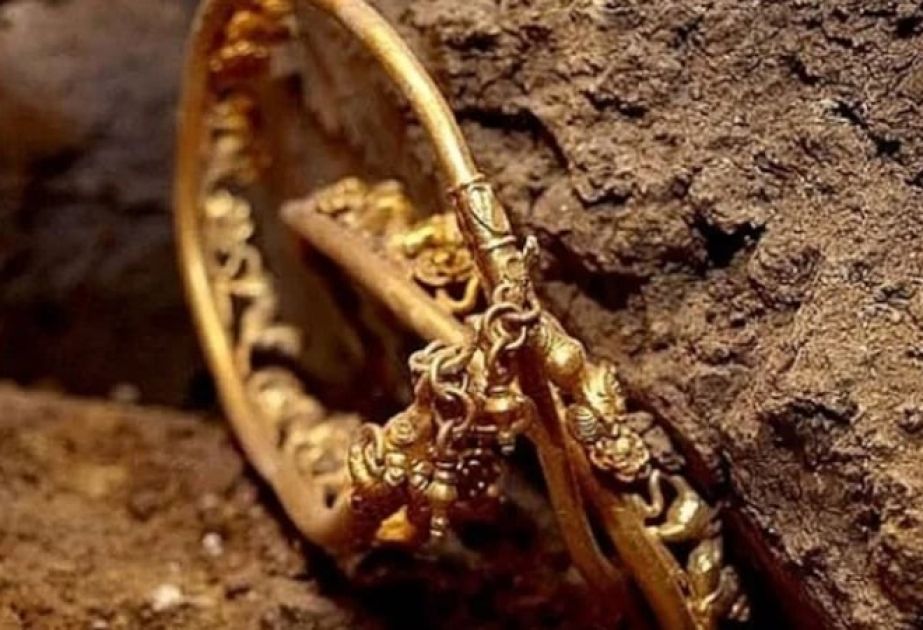Ancient Buddhist relics discover in temple in Thailand

By Alimat Aliyeva
A treasure trove of ancient Buddhist relics has been unearthed beneath a historic temple in northeastern Thailand, offering a remarkable glimpse into the region’s spiritual and artistic heritage, Azernews reports.
The discovery was made during preservation efforts at Wat Dhammachak Semaram Temple, which initially aimed to reduce underground humidity affecting the base of its massive reclining Buddha statue.
“At a depth of just over a meter, our team discovered a clay container holding 33 bronze, silver, and gold objects. These findings are extraordinary — they allow us to learn much about the craftsmanship and religious devotion of the time,” Phnombootra Chadrajoti, Director General of the Department of Fine Arts, told local media.
Among the unearthed items were gold rings carved in the shape of lotus buds, paired silver earrings inlaid with multicolored grains, and bronze spiral pendants — the latter symbolizing infinity in Buddhist tradition. Archaeologists believe these artifacts were votive offerings placed by monks during the consecration of the temple centuries ago.
The most striking piece is a gold plate measuring 8 by 12.5 cm, depicting the Buddha in the Vitarka Mudra — a hand gesture symbolizing teaching and intellectual discussion. The level of detail is astonishing: from the intricately carved lotus throne symbolizing enlightenment to the ornate halo and elongated earlobes, a traditional sign of the Buddha’s renunciation of worldly wealth.
Another fascinating relic is a damaged silver relief showing three divine figures. At the center stands the Buddha holding a begging bowl, flanked by Phra Phrom (the Thai version of Brahma, recognizable by his four faces) and an unidentified deity holding a banyan branch, a symbol often linked to sacred wisdom.
A third standout object is a composite plate made from gold,
silver, and copper using the “sandwich” technique — a rare and
complex metalworking method. An X-ray scan revealed a hidden Dharma
Wheel (Dharmachakra) with eight spokes, representing the Eightfold
Path of Buddhist teachings.
This discovery not only enriches Thailand’s cultural legacy but
also highlights the advanced metallurgical skills and symbolic
artistry of early Southeast Asian Buddhist communities. Experts
believe the find could date back over 1,000 years, possibly to the
Dvaravati period, when Buddhism flourished in the region. The
artifacts will soon undergo further analysis and conservation, and
officials are considering establishing a museum or on-site
exhibition to display the relics, turning Wat Dhammachak Semaram
into a new hub for cultural tourism and Buddhist scholarship.
Here we are to serve you with news right now. It does not cost much, but worth your attention.
Choose to support open, independent, quality journalism and subscribe on a monthly basis.
By subscribing to our online newspaper, you can have full digital access to all news, analysis, and much more.
You can also follow AzerNEWS on Twitter @AzerNewsAz or Facebook @AzerNewsNewspaper
Thank you!
